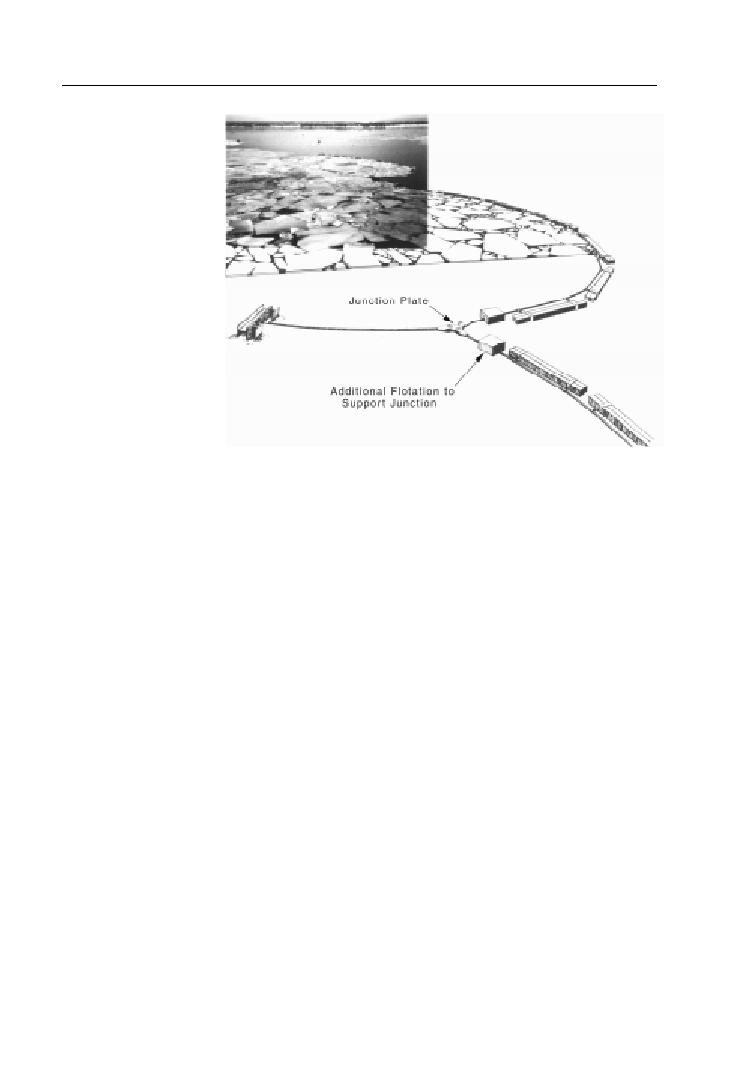
COLD REGIONS TECHNICAL DIGEST NO. 96-1
2
1. Typical ice boom
arrangement. In this
case, boom units are
constructed of doubled
1- 1- 12-ft (0.3-
0.3- 3.7-m) timbers,
connected by chain to
the boom cables. The
boom cables connect to
the anchor cable via a
junction plate, sup-
ported by floats.
of mild slope and relatively low surface water velocity. Booms are
typically not designed to retain breakup ice runs.
Ice booms having the main purpose of frazil ice retention, both
to enhance winter hydropower production and to reduce the po-
tential for ice jam flooding during freezeup, are sometimes termed
"formation booms." This type of boom is also used to form and
stabilize shore ice adjacent to navigation channels and to alleviate
frazil problems associated with winter navigation at the approaches
to locks and dams. Other types of booms are designed to retain or
divert brash or floes, and apply to ice problems associated with
winter navigation, the operation of locks and dams, and winter
hydropower production.
By retaining frazil ice, formation booms promote rapid ice
cover growth during the early ice season. The ice cover that forms
behind a boom insulates the water beneath, eliminating local
frazil ice production. At the same time, the cover traps frazil
arriving from upstream, preventing its transport to traditional ice
problem sites downstream. Formation booms, often placed in
series, have been used successfully for many decades to alleviate
frazil ice problems associated with hydroelectric production. Dur-
ing the early ice season, these booms promote the rapid growth of
a smooth sheet ice cover upstream of hydropower intakes, mini-
mizing the head losses that commonly result from frazil accumu-
lations and the formation of hanging dams. Where flow control is
an option, discharge reductions during the critical ice formation
period may accelerate the rate of ice cover growth and reduce



 Previous Page
Previous Page
